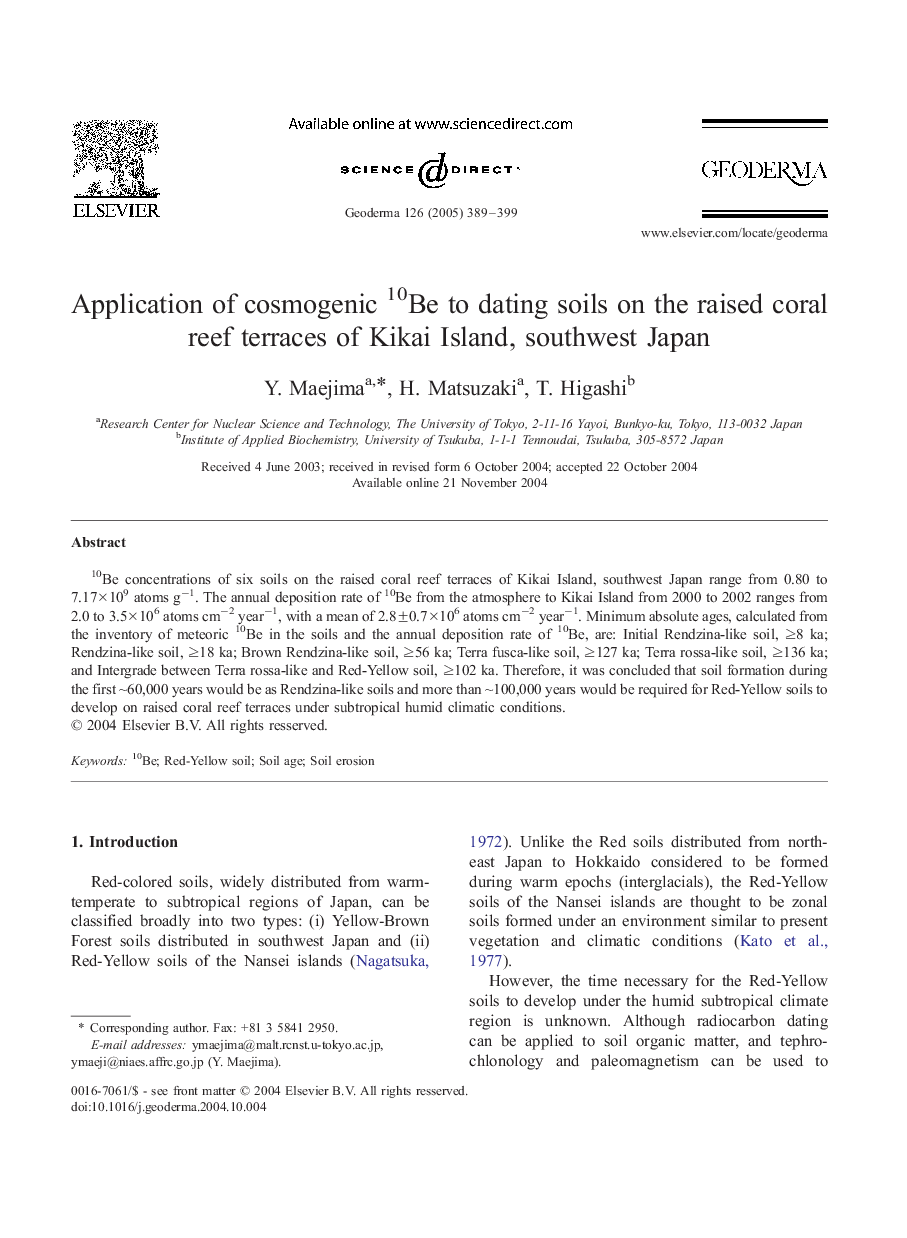| Article ID | Journal | Published Year | Pages | File Type |
|---|---|---|---|---|
| 9490598 | Geoderma | 2005 | 11 Pages |
Abstract
10Be concentrations of six soils on the raised coral reef terraces of Kikai Island, southwest Japan range from 0.80 to 7.17Ã109 atoms gâ1. The annual deposition rate of 10Be from the atmosphere to Kikai Island from 2000 to 2002 ranges from 2.0 to 3.5Ã106 atoms cmâ2 yearâ1, with a mean of 2.8±0.7Ã106 atoms cmâ2 yearâ1. Minimum absolute ages, calculated from the inventory of meteoric 10Be in the soils and the annual deposition rate of 10Be, are: Initial Rendzina-like soil, â¥8 ka; Rendzina-like soil, â¥18 ka; Brown Rendzina-like soil, â¥56 ka; Terra fusca-like soil, â¥127 ka; Terra rossa-like soil, â¥136 ka; and Intergrade between Terra rossa-like and Red-Yellow soil, â¥102 ka. Therefore, it was concluded that soil formation during the first â¼60,000 years would be as Rendzina-like soils and more than â¼100,000 years would be required for Red-Yellow soils to develop on raised coral reef terraces under subtropical humid climatic conditions.
Keywords
Related Topics
Physical Sciences and Engineering
Earth and Planetary Sciences
Earth-Surface Processes
Authors
Y. Maejima, H. Matsuzaki, T. Higashi,
